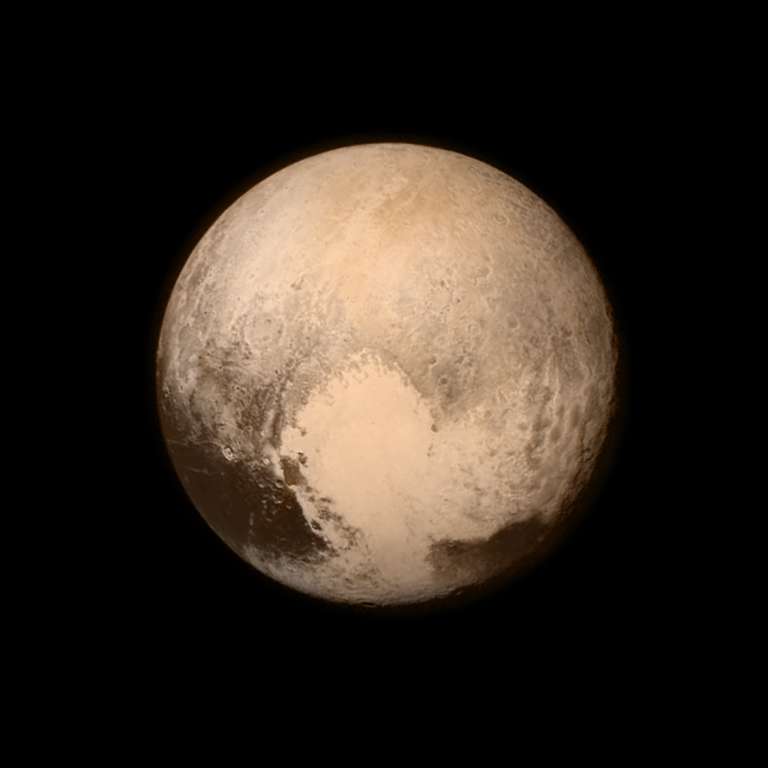Emily Lakdawalla • Jul 14, 2015
New Horizons' best look at Pluto before close approach
Feast your eyes upon it!

Here are my first impressions of this wonderful photo:
Wow, the surface is diverse. I see so many different kinds of terrain. The "heart" has broken up into two distinctly differet surfaces, a very smooth one in the west and a patchier one in the east. The dark stuff at the equator is very familiar; it looks just like Iapetus. But the bumpy terrain on the eastern edge is not familiar at all. I can't think of an analog for it.
I do see impact craters. To the left of the heart, in the dark area especially, there are several circular features that are pretty clearly impact craters. There are lots of other circular features visible, but I think it's less obvious that they are craters; it'll take a closer look to determine that. Topography will help. Tomorrow we will get another photo that is very similar to this one, but taken at a slightly different angle, which will give us 3D information to help see whether the circular features have crater shapes.
On the left side, I see some linear features, but they're too small for their nature to be really clear.
The pole is distinctly redder than the terrain around the pole. That's interesting. I wonder if it's the same phenomenon that's darkening Charon's pole.
On the left, I see some hints of the "mushroom terrain" that Voyager saw on Triton.
In sum, I see a little Iapetus, a little Triton, but a wholly unique world.
At a press briefing just now, I asked whether there was any evidence for atmospheric features -- clouds or hazes. Alan Stern said that they hadn't seen anything in the images yet, nor any plumes. But it's still early and there's a lot more data to come. When I tweeted this, I received a lot of responses from people who stretched the image and saw features around the edge. Those were likely JPEG compression artifacts -- believe me, if the haze were that obvious, the mission's scientists would have noticed it.
I am now crossing my fingers that the rest of the flyby goes well. We'll know in 12 hours....
UPDATE: I'll collect any notes that I find from science team members talking about this photo here as well.
09:39 EDT: I caught up with Will Grundy in the hallway. Will has done a huge amount of Earth-based observational work on Pluto. He told me that they specifically targeted this hemisphere to be the close-approach hemisphere because they knew it would contain the "contrastiest" part of the surface. From Earth-based spectroscopic data (not New Horizons data), we already know that the left side of the "heart" is made of carbon monoxide ice. He is surprised and pleased by the closeness of the match between the Earth-based maps of Pluto and what New Horizons is seeing.
10:00ish EDT: I caught up with Marc Buie, who headed the pre-New Horizons Pluto mapping efforts. He is pleased and surprised by how well the images match. Those efforts included two phases of Hubble mapping, and one set of maps computed from a bunch of "mutual event" observations, when Pluto and Charon eclipsed each other. He said the maps generated from the mutual event observations have a host of problems, so he is itching to get the New Horizons maps to subtract the major features out of his mutual event maps and look for evidence for temporal change.
Support our core enterprises
Your support powers our mission to explore worlds, find life, and defend Earth. You make all the difference when you make a gift. Give today!
Donate

 Explore Worlds
Explore Worlds Find Life
Find Life Defend Earth
Defend Earth

